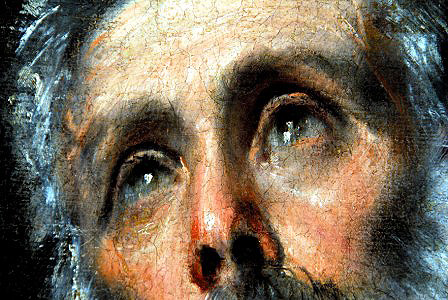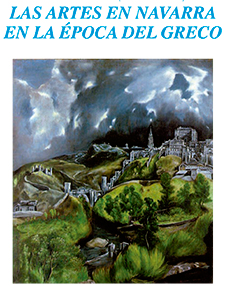AROUND THE 4TH CENTENARY OF EL GRECO (1541-1614). THE ARTS IN NAVARRA IN THE AGE OF EL GRECO
September 3, 2013
El Greco and Toledo
Ms. Ana Carmen Lavín Berdonces. Director of the El Greco Museum
The poet Jorge Guillén wrote that names are on the patina of all things. There are names that are linked to places and their mark is still felt despite the passing of the centuries. To speak of El Greco is to speak of Toledo and to remember the painter is to think of the city where he spent most of his life. Toledo and El Greco form a symbiosis that brings us to report elongated images of knights with lechuguilla necks and serious faces; and echoes of battles, swords, heroes, deeds, great monarchs and epics of more glorious times. El Greco was a witness of these mythical times and signed in exquisite Greek letters his particular vision of these events, capturing it in the form of wonderful paintings, full of bright colors and unforgettable faces and gestures.
To walk around Toledo and visit some of the places that preserve his works is to take a trip back in time and to contemplate, feel, smell, and taste every corner of the city that preserves that patina, that imprint of the painter that is engraved in the report and gets into the entrails like a lichen on a rock. Many of the places where he lived, as well as many of his paintings, have disappeared; but as the poet said, we still have his names, which we can almost touch on the rust and granite of the old city of the Tagus.

El Greco, View and map of Toledo. Detail
El Greco Museum. Toledo
Domenikos Theotokopoulos, better known as El Greco, was undoubtedly one of the most special immigrants that the city received in the 16th century. At that time Toledo was a veritable hotbed of peoples and traders. Greeks, Arabs, Italians, Germans or Franks were chatting in their respective languages throughout the cosmopolitan city. El Greco will arrive at the door of its walls in 1577, coming from a long journey that had begun on the island of Crete, where he was born in 1541. At the age of twenty-six he left his homeland, besieged by the Turks, to travel to Venice and Rome, where he lived for ten years, and from there he finally moved to the court of Madrid and Toledo; in this city he settled permanently until his death on April 7, 1614 at the age of 73. It was also in this city that he painted almost all of his masterpieces, among them his famous Vista y Plano de Toledo, which is so fascinating to researchers.
Regardless of the numerous opinions of scholars, who have just highlighted time and again the great complexity of the work and its exceptional character due to the use of distorted space and perspective and allegorical elements, El Greco managed to show the city as a special place, vehement, telluric, full of symbolism; whether as New Rome, Troy or Jerusalem, Toledo will always be "The City of El Greco" to which he bequeathed fame by turning it into a mythical setting, regardless of the destiny that history had in store for it.

El Greco. The tears of St. Peter. Detail
El Greco Museum. Toledo
PROGRAM
Tuesday, 3rd September
El Greco on his 4th Centenary
Ana Carmen Lavín Berdonces. Director of the El Greco Museum
El Greco and Toledo
Ms. Ana Carmen Lavín Berdonces. Director of the El Greco Museum
Wednesday, 4th September
Of patrons and artists
D. Ricardo Fernández Gracia. Chair of Heritage and Art of Navarre
Juan de Anchieta: a genius of sculpture
Ms. María Concepción García Gainza. Chair of Navarrese Heritage and Art
Thursday, 5th September
Rolan Mois and the beginnings of Counter-Reformation painting in Navarre
Mr. Jesús Criado Mainar. University of Zaragoza
The silversmith Velázquez de Medrano and micro-architecture in silver
D. Ignacio Miguéliz Valcarlos. UNED Pamplona

